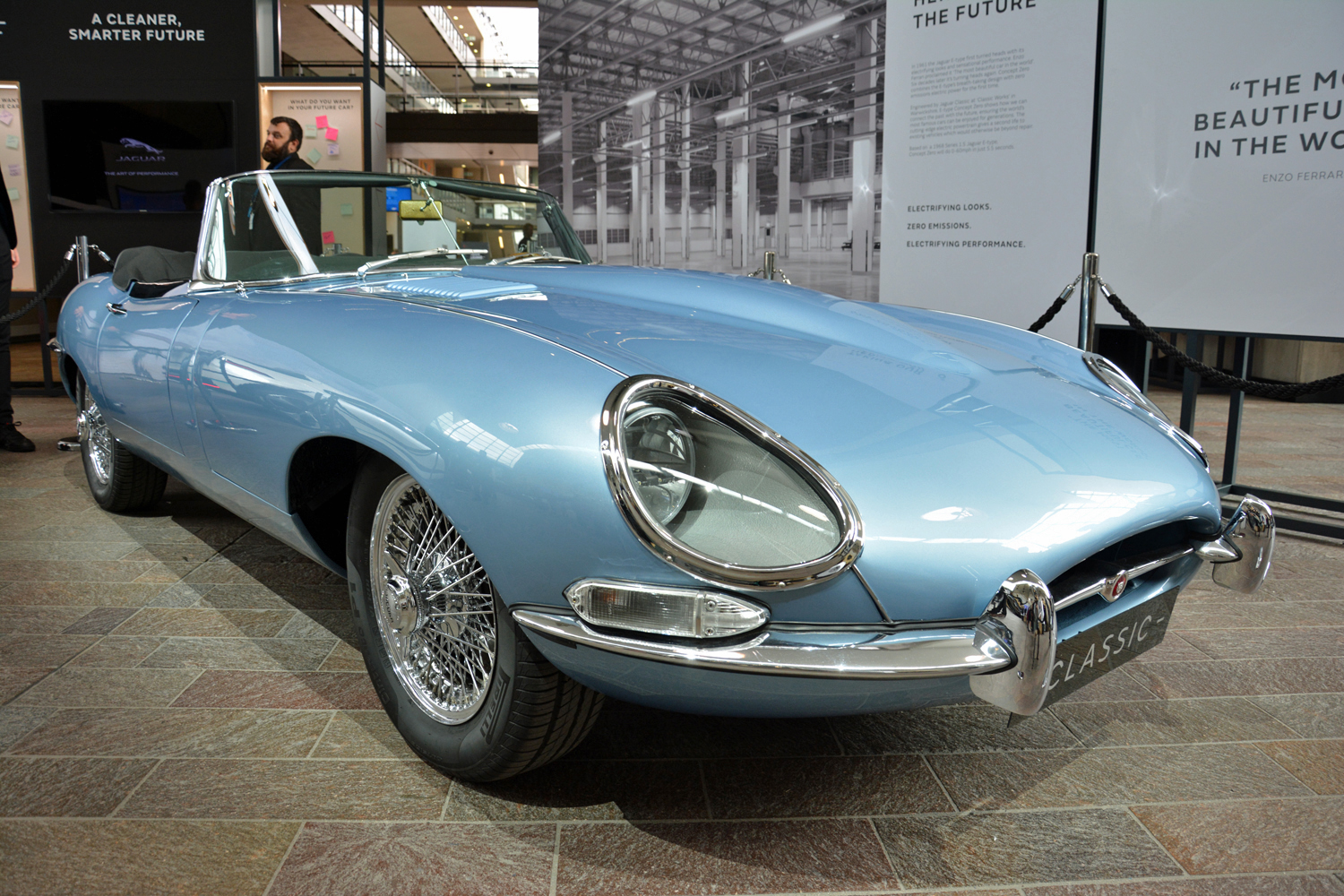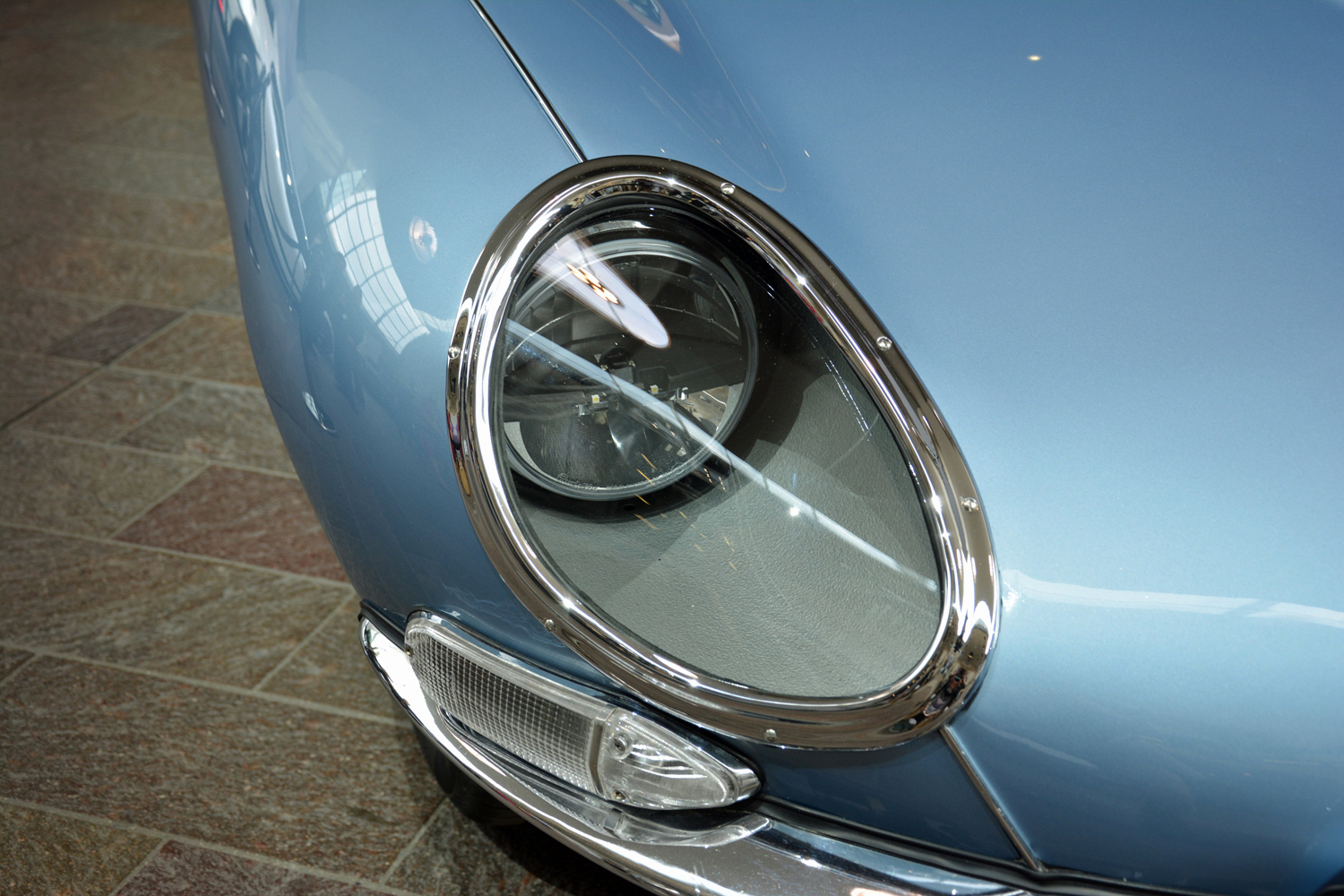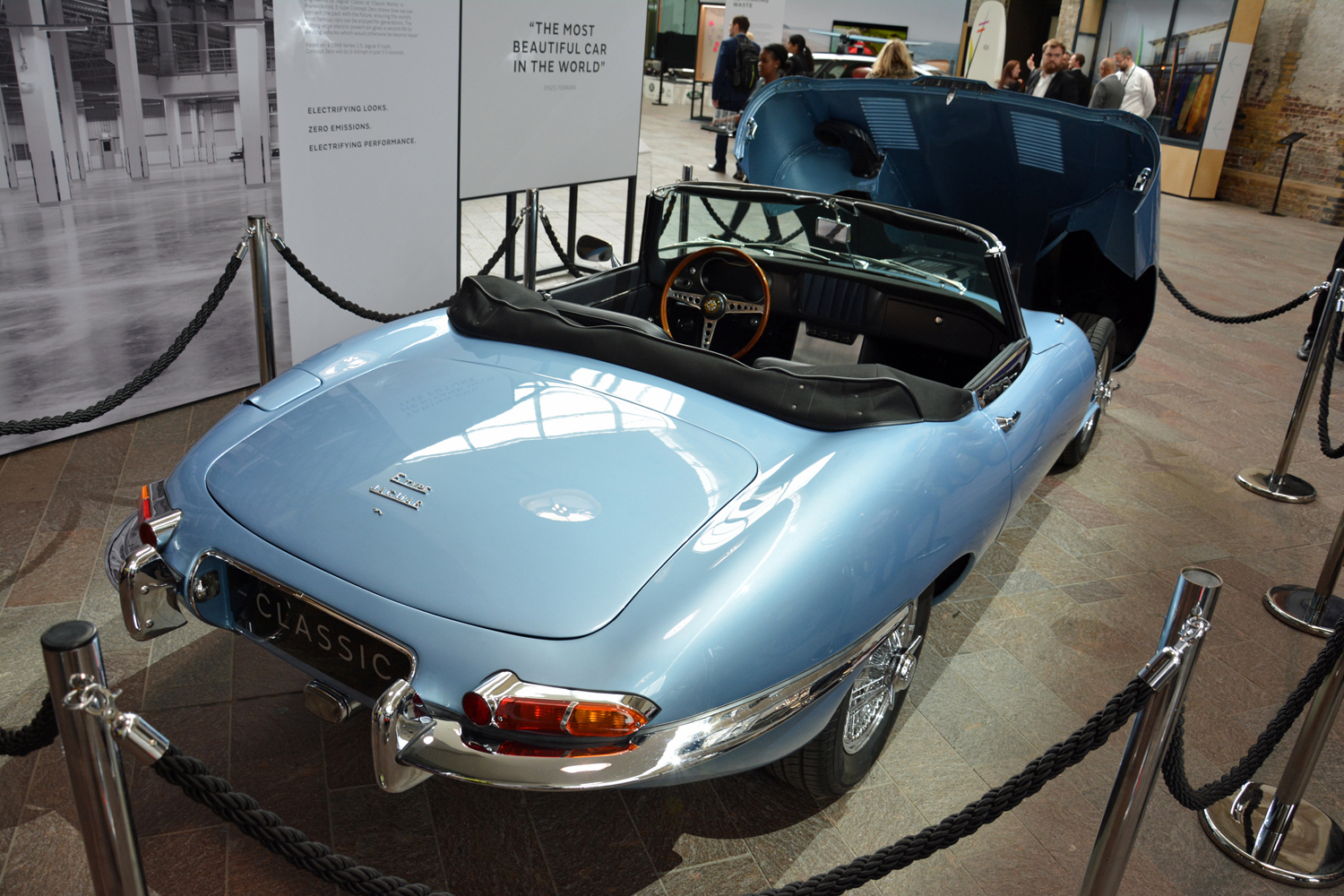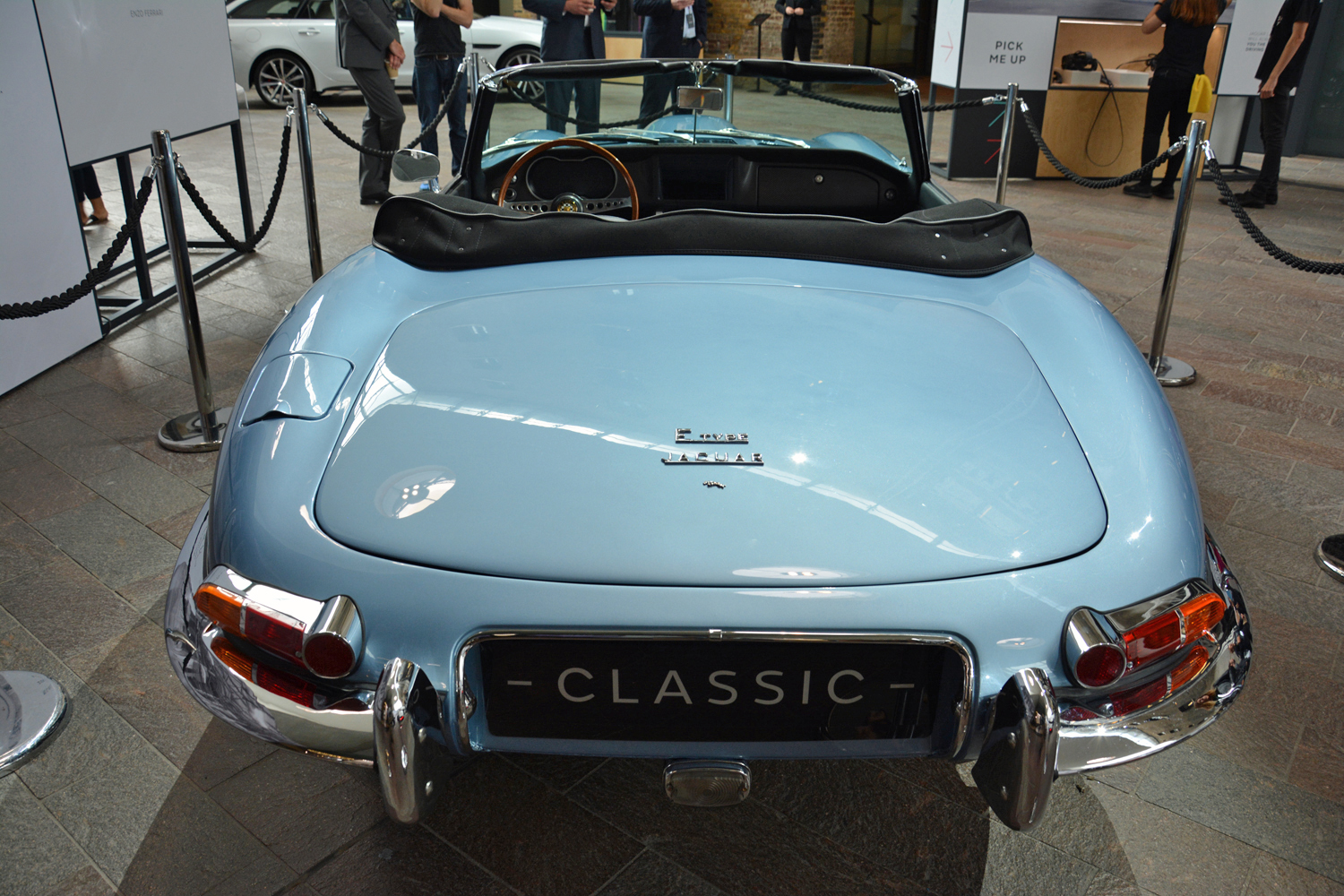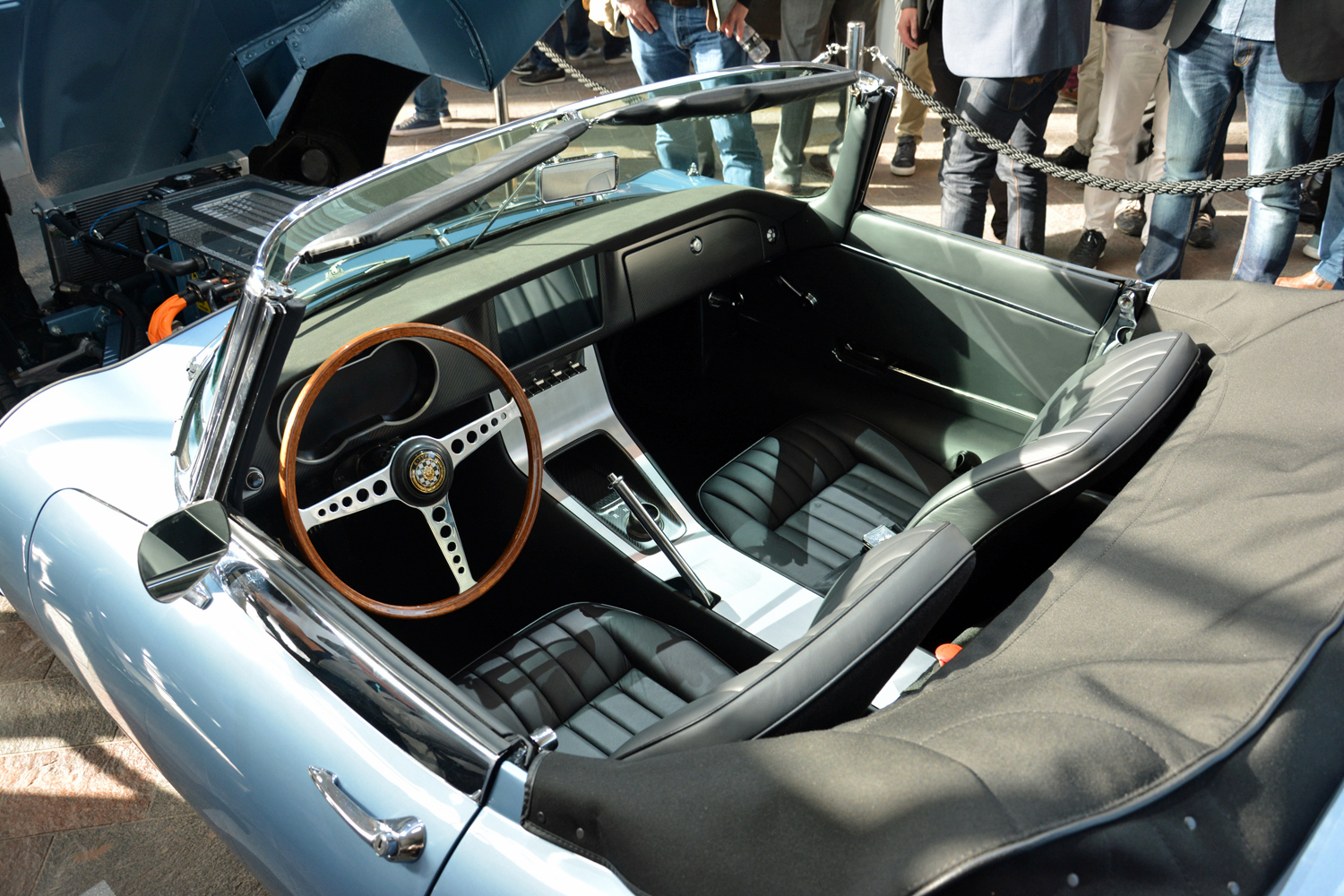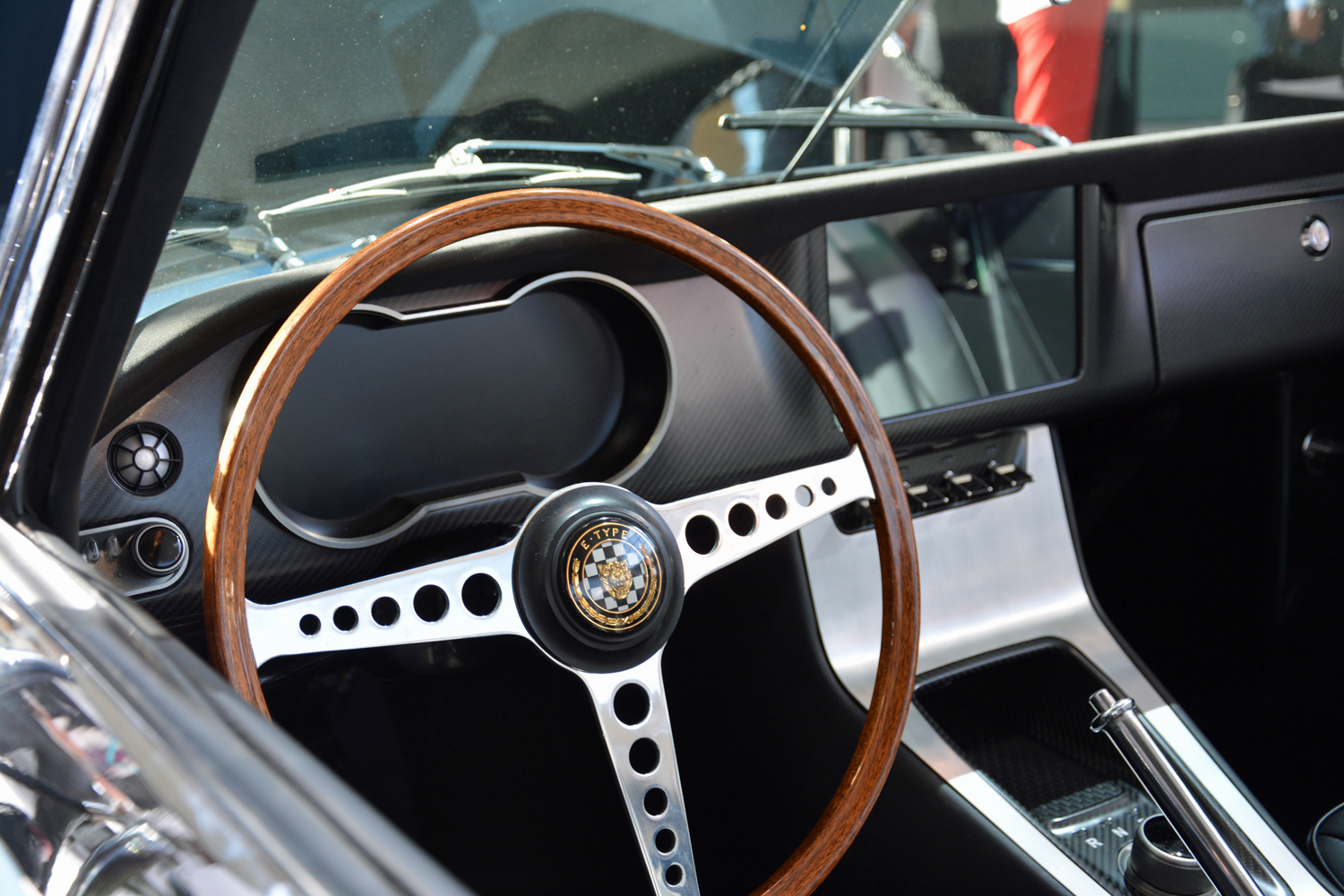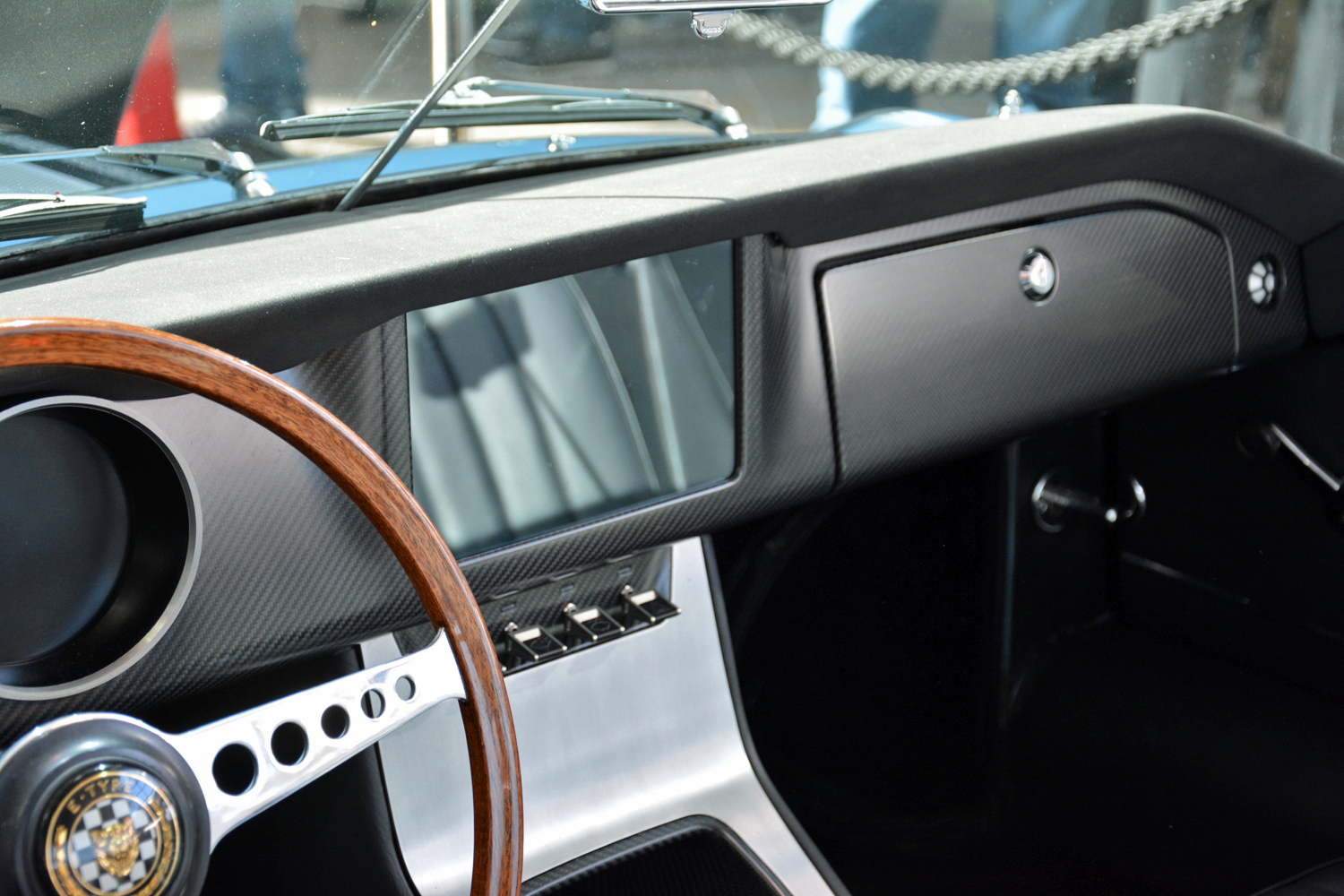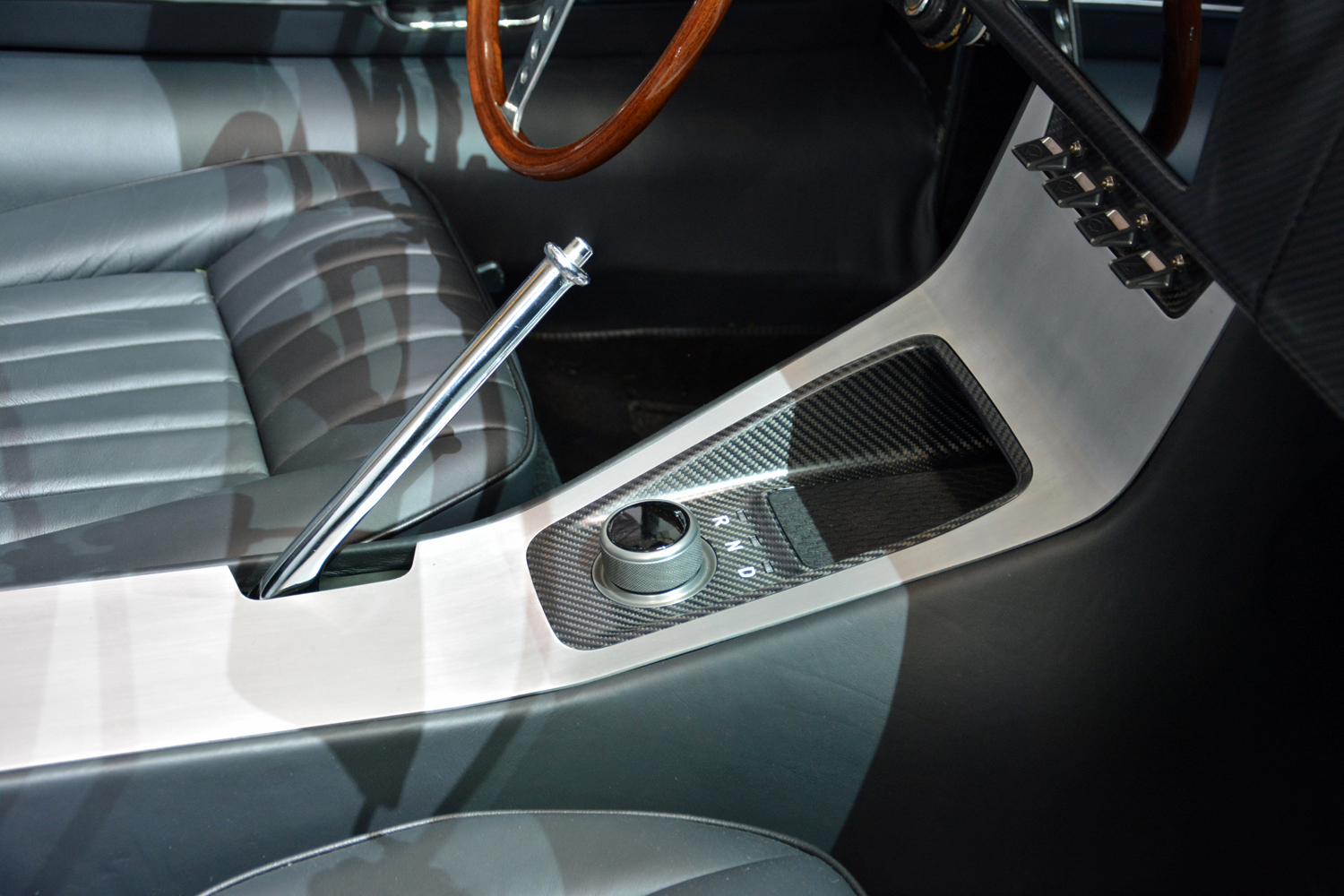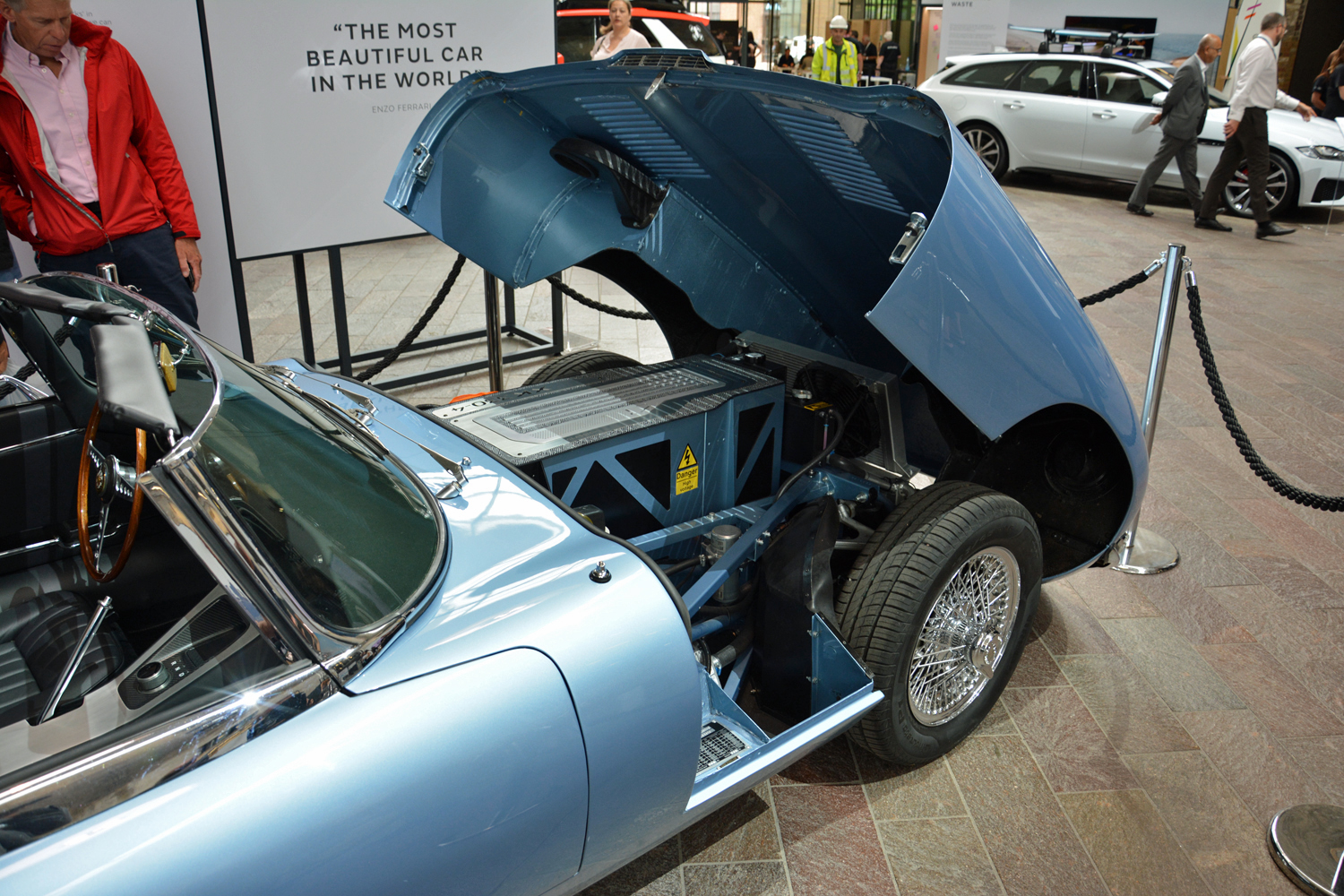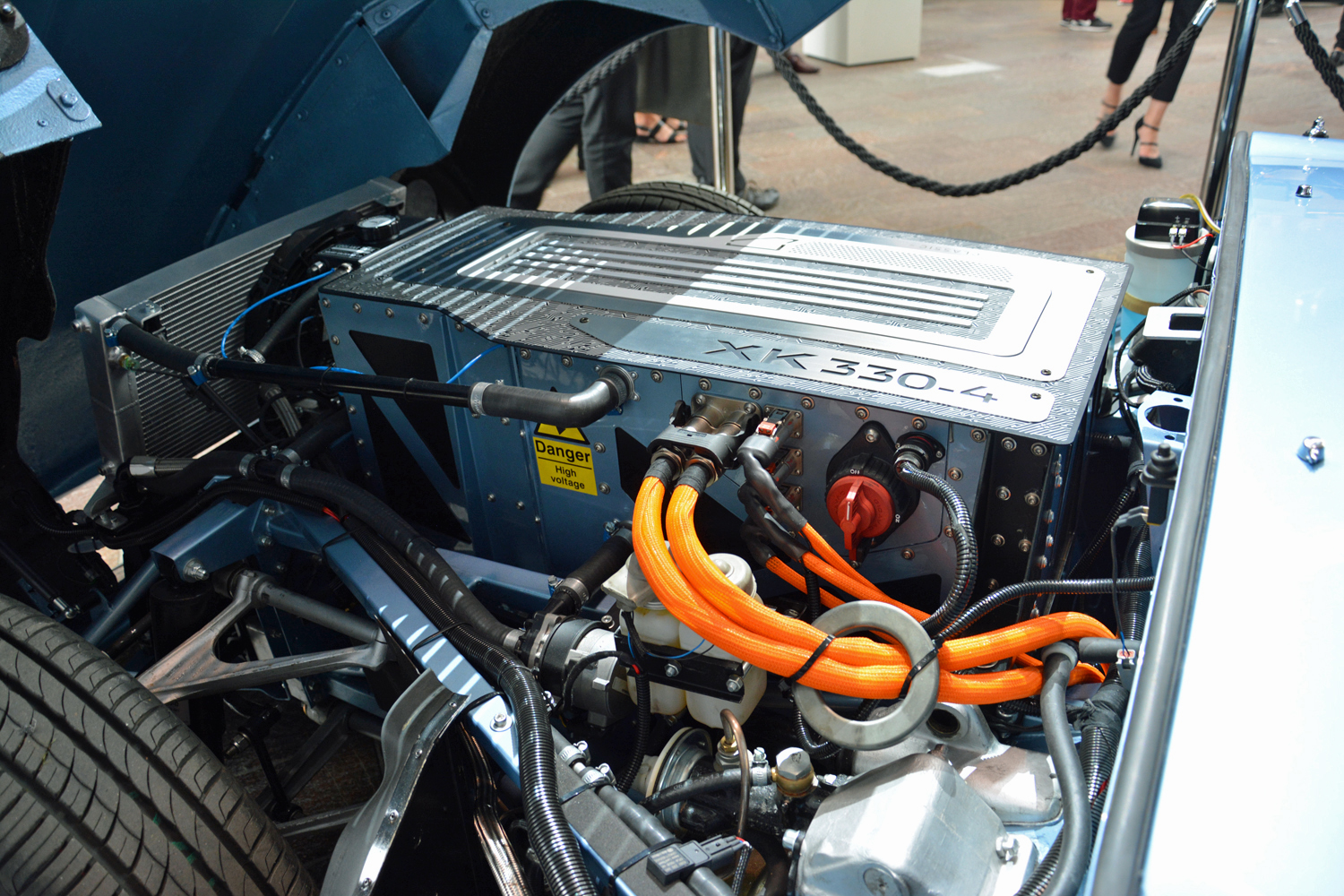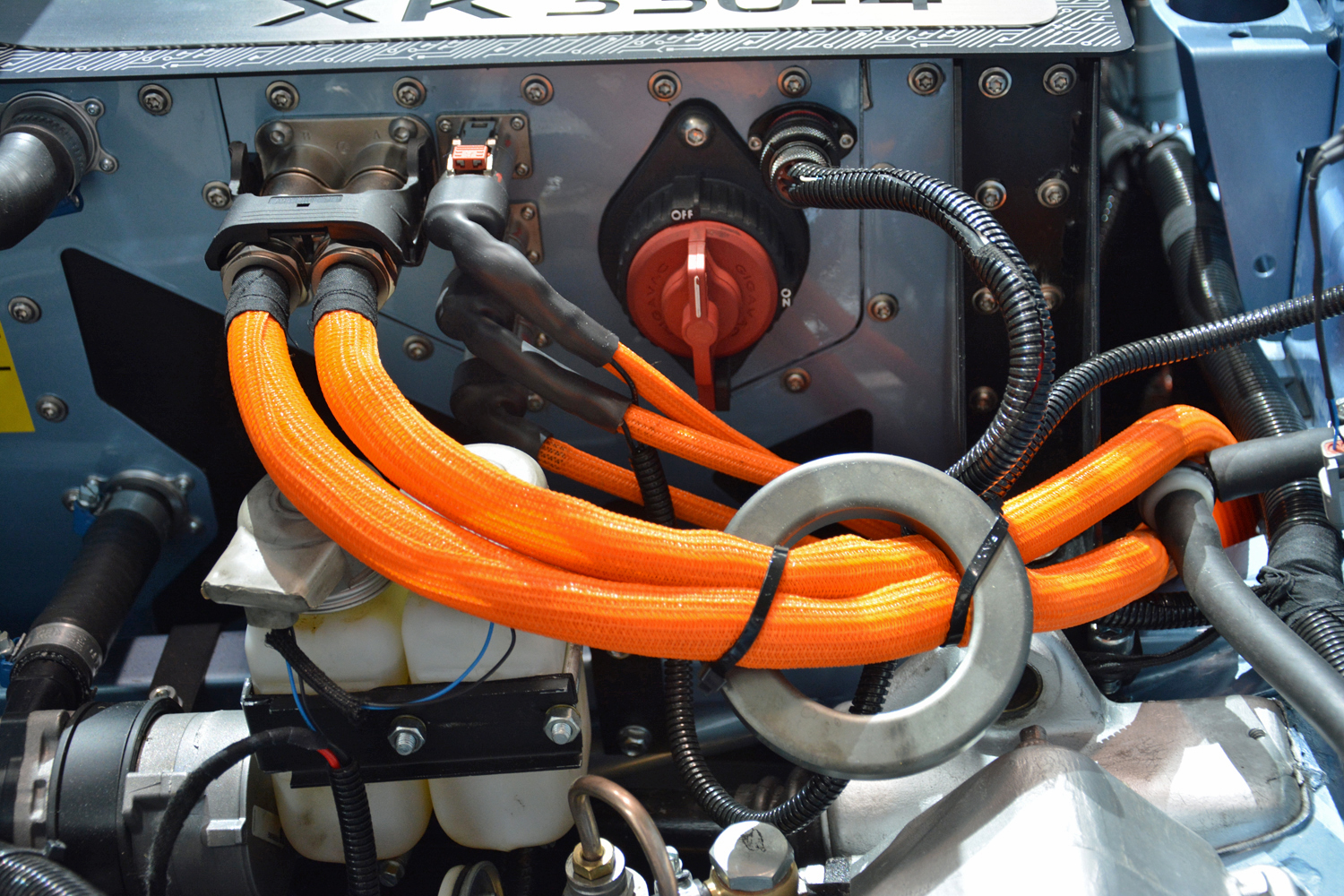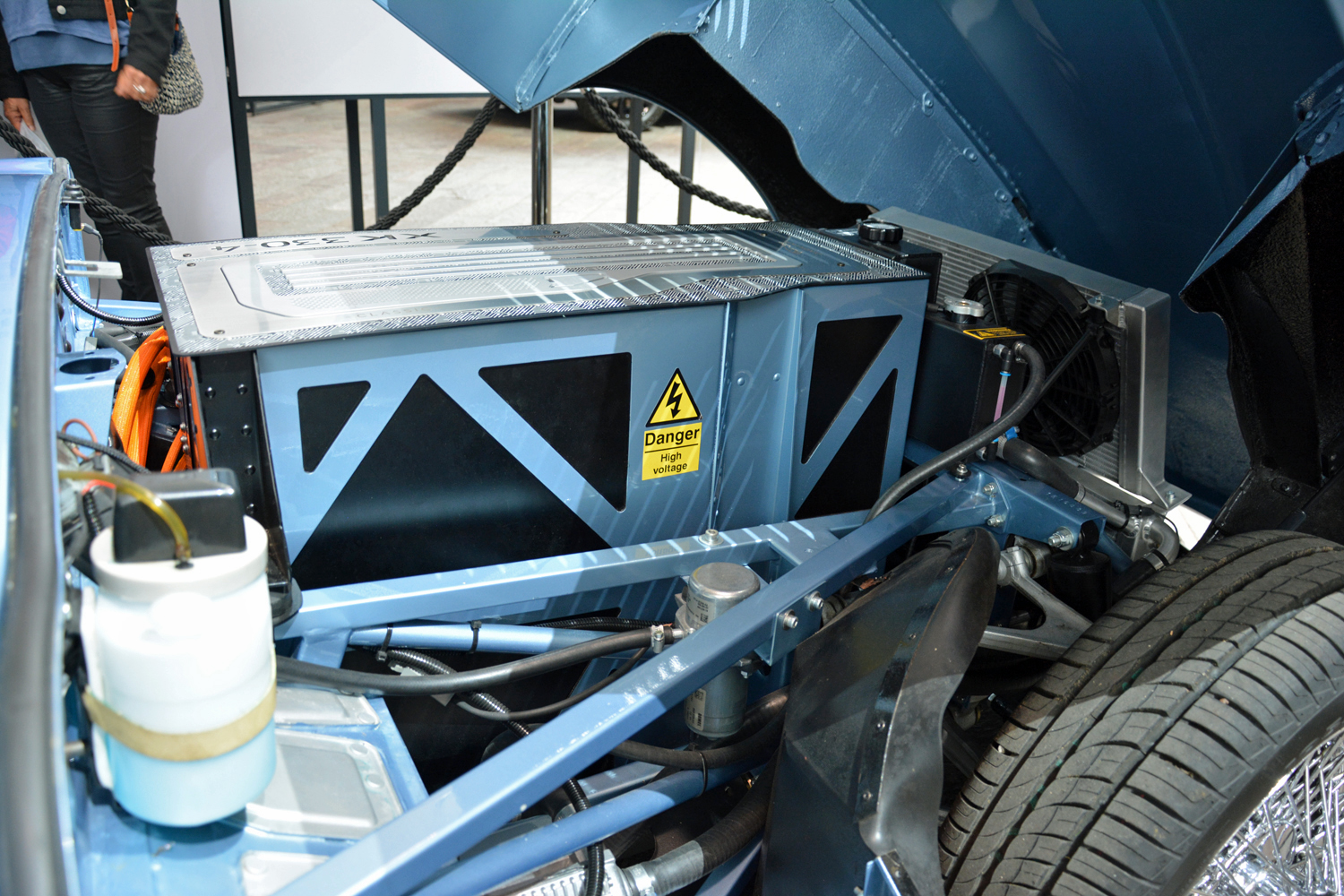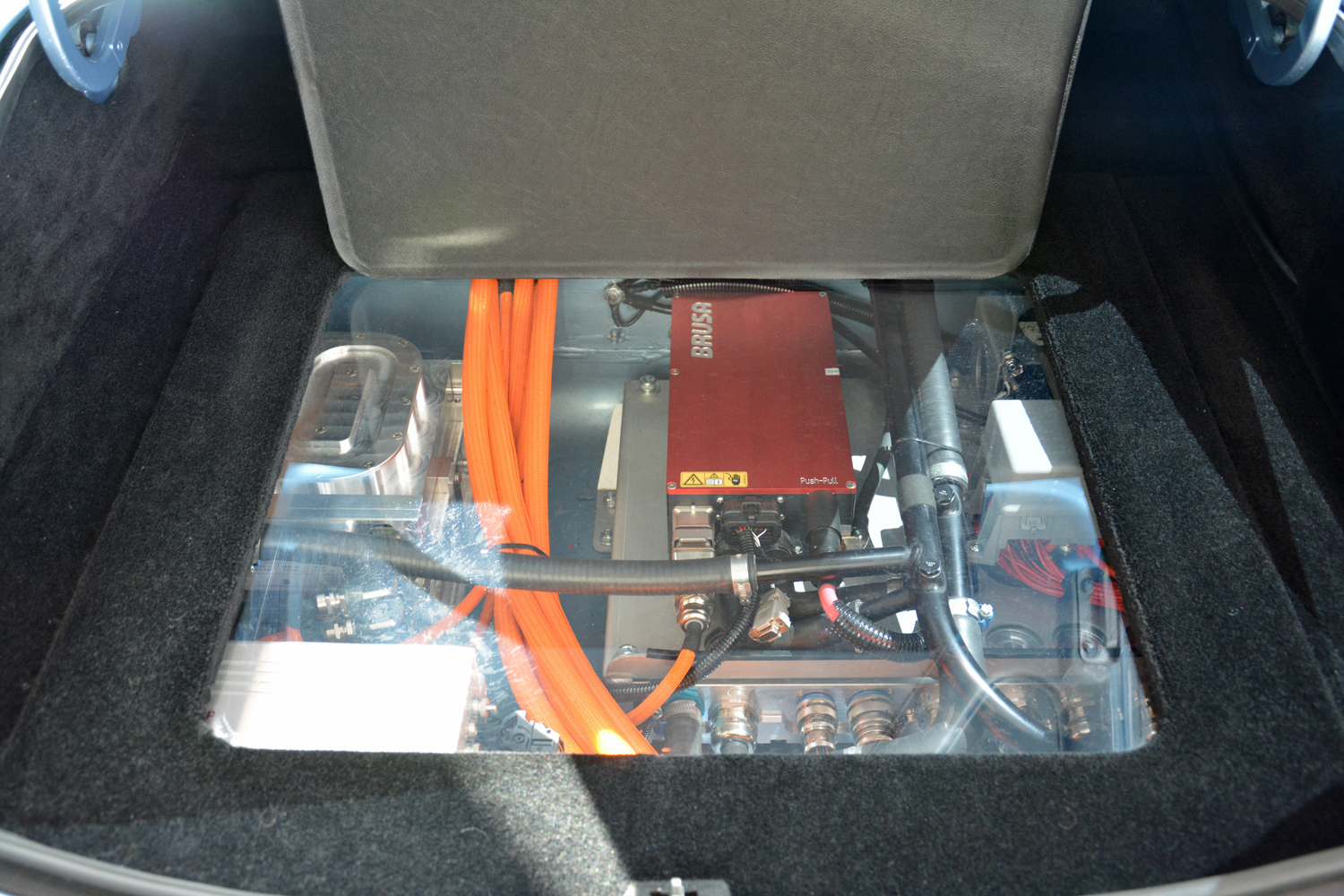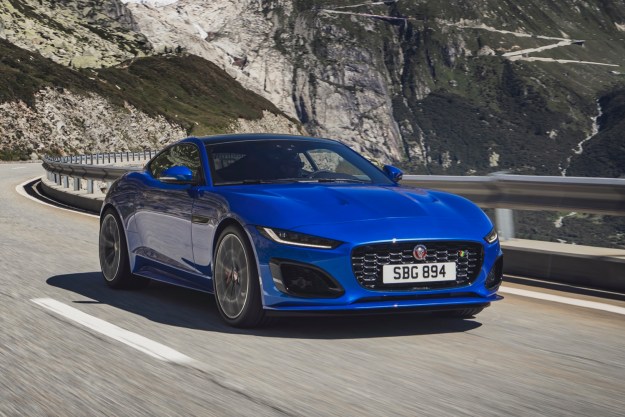Jaguar calls it “the most beautiful electric car in the world.”
No less of an authority than Enzo Ferrari was said to have called the Jaguar E-Type “the most beautiful car in the world,” and now Jaguar has rebuilt one of the classic sports cars with an electric powertrain. Named E-Type Zero, it certainly is easy on the eyes.
Unveiled at the very first Jaguar Land Rover Tech Fest in London, the Jaguar E-Type Zero combines what is arguably the automaker’s most iconic car with the future direction the company plans to go in. JLR just announced that every vehicle it sells after 2020 will have a mild hybrid, plug-in hybrid, or all-electric powertrain. Jaguar is set to launch its first all-electric model next year, a production version of the I-Pace SUV concept.
The E-Type Zero is no SUV. It’s a 1968 Series 1.5 Jaguar E-Type Roadster, restored at JLR’s new “Classic Works,” where the company rebuilds and maintains vintage cars. The electric E-Type does 0 to 62 mph in 5.5 seconds, which Jaguar claims is actually about 1.0 second quicker than the gasoline-powered original.
An electric motor mounted where the transmission would normally be develops 220 kilowatts (295 horsepower), with power sent to the rear wheels through a single-speed automatic transmission and the Jag’s stock rear differential. A 40-kilowatt-hour lithium-ion battery pack sits under the hood, where the E-Type’s straight-six engine used to reside. Jaguar claims the battery pack has roughly the same dimensions as the engine, and weighs about the same, too, so the car’s balance isn’t affected. Overall weight is 101 pounds less than the original E-Type.
Jaguar estimates real-world range at about 170 miles, which is more than the recently-introduced second-generation Nissan Leaf. A recharge takes six to seven hours, and the charge port is located where the fuel filler would be on a stock E-Type. The rest of the car looks pretty original, although the interior has been augmented with a display screen, a specific carbon fiber dash, and a rotary shifter similar to the ones used in many current Jaguar models. Careful observers will also notice it’s fitted with modern-day LED headlights, which were added because the period-correct units draw a lot of electricity.
Because the electric powertrain fits so easily into the footprint of the original six-cylinder engine, many other classic Jaguar models could be easily converted to electric power, the company notes. That “XK” engine debuted in 1949 in the XK120, and lasted until 1992. Jaguar is likely hoping the I-Pace and its new electric powertrain will have a similarly impressive legacy.
The E-Type Zero is a one-of-a-kind prototype right now. Mike Goodbun, the global head of public relations for Jaguar Land Rover’s Special Operations, told Digital Trends the company could offer the conversion to full-electric as part of its Reborn program, which sources E-Types from all over the world and restores them while keeping as many of the original parts as possible. The full Reborn treatment and the electric swap would cost about 300,000 British pounds, a sum that converts to roughly $392,000.
What about the Land Rover part of the business? The technology found in the E-Type Zero could easily be packaged to fit in a classic Land Rover, like a Series II or the original Range Rover, but a spokesperson for the company told Digital Trends there are no plans to perform the conversion quite yet. Whether or not we’ll see a battery-powered vintage Land Rover depends on how the E-Type Zero is received by collectors and enthusiasts.
Update: Added more technical specifications and live pictures.
Editors' Recommendations
- What are the different types of electric car chargers?
- 2022 Audi e-tron GT first drive review: This slot car needs no track
- Audi’s electric 2022 RS E-Tron GT is a concept that escaped the drawing board
- The best electric SUVs
- Audi E-Tron vs. Jaguar I-Pace
